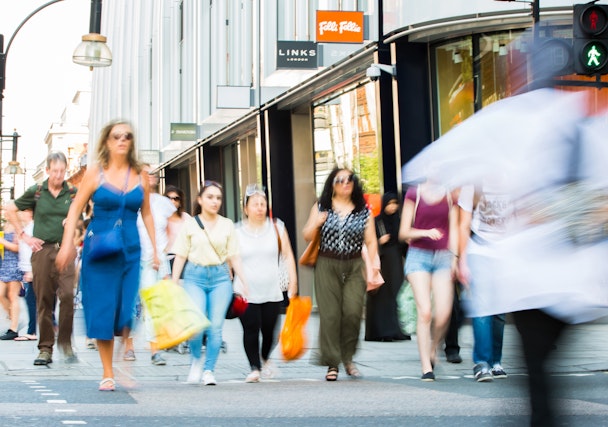The digital consumer trends defining the UK’s gradual return to normality
As the UK opens up and businesses look to return to normal, HubSpot’s Crevan O’Malley shares insights garnered from 100,000 of its customers on how to ensure long-term, sustainable growth.

Now that restrictions are lifting, high streets in the UK are coming back to life
Things are looking up in the UK. Shops are open, pubs bustling inside and out, and lockdown restrictions a fading memory.
The recent reopening of society has been a cause for celebration within the business community. High-street footfall rose by 330% after non-essential retail was allowed to resume in mid-April, putting wind in the sails of many businesses that have struggled to stay afloat, and putting hope into others that they can return to growth.
But this gradual return to something resembling normality may be a bumpy one. For all the talk of a new normal, no one really knows exactly what this new normal is. In particular, for customer business leaders who have pivoted to digital-only for the past year or so, questions remain over just how much they need to adapt these strategies as in-person interactions become common again.
Now more than ever, businesses need to take stock of the strategies, tools and tactics they’re using to ensure they can deliver delightful experiences to their customers.
To help with this, HubSpot has been analyzing key business metrics from more than 100,000 of its customers, putting a spotlight on the trends businesses need to know about to ensure a return to long-term, sustainable growth in 2021 and beyond.
Businesses need to be digital-first in a post-pandemic world, not just digital-ready
Perhaps the biggest lesson that businesses need to learn is that they now need to be ‘digital-first’. The onset of the pandemic meant that many companies that were ‘digital-ready’ had to put their plans to the test and adapt them rapidly.
A return to in-person interactions may cause some businesses to think that they can scale their digital approaches back down, but trends indicate that this shouldn’t be the case. Finding the balance between in-person and digital interactions will be the next holy grail.
Digital interactions with customers hit some all-time highs as the restrictions began lifting in April. HubSpot’s data showed that website traffic for UK businesses was trending at 106% above pre-pandemic levels, the highest average figure for any period in the pandemic. Additionally, marketing email open rates have been consistently around 30% since restrictions started lifting in March – a clear jump from the same period last year, when open rates were oscillating between 13% and 19%.
These habits suggest that consumers still view digital as the primary way of finding out information about businesses they’re interested in buying from, despite the loosening of restrictions. Business leaders should ensure they’re maintaining a strong online presence and a seamless website experience, and regularly post and share content that is helpful and informative if they’re to keep interest from customers in the new normal.
Chatbots and digital support services will be key
Another striking statistic from our data analysis is that customer-initiated chat conversations (which are often customer support requests) have continued to grow enormously even after restrictions were lifted. There were 253% more chat requests from customers in early June compared to the pre-Covid average, demonstrating that customers need more support now than ever.
This is a trend that will likely continue and one of the key areas for business leaders to focus on. While lockdown restrictions are loosening, they have normalized the act of seeking help from a business online rather than going into a store. And while customers may want to visit physical locations for the positive aspects that come from interacting with a business face-to-face, a complaint or support request is now something that can be much more easily handled online.
The key to ensuring a strong support strategy is a robust technology framework. Human customer service reps can only do so much, so ML-powered chatbots should be used wherever possible to help triage and solve simple requests quickly to keep customers happy.
A powerful and easy-to-use CRM system that unites all customer data from marketing, sales and service into a single platform is a necessity in enabling this. Without the reassurance that comes from in-person interactions, businesses need to remove as much friction from the experience as possible. Having all data readily accessible to customer service reps is crucial for that.
A lack of understanding of the problem or the customer’s previous interactions with the business is much more damaging in a digital setting where the customer expects that the rep should have all the information they need on screen.
Beware the halo effect
At this vital time, businesses may be breathing a sigh of relief, but they need to ensure that they’re looking towards the long-term future, and key to that is understanding the trends around what is currently happening.
While the numbers at the moment are promising, happiness around lockdown restrictions lifting can have a ‘halo effect’ driving large, positive results in the short-term which may quickly start to slow down.
That’s why it’s so important for businesses and customer experience leaders to ensure they have the tools and strategies in place to run better now (and in the event of future crises) so they can grow better in the future.
Crevan O’Malley is the country manager for UK & Ireland at HubSpot.

